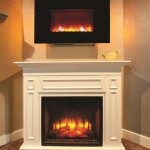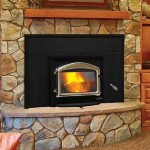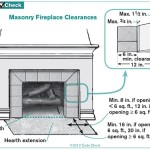Stainless Steel Fireplace Screen: A Durable and Elegant Hearth Accessory
A fireplace screen serves as a crucial safety barrier and aesthetic enhancement for any hearth. Among the various materials available, stainless steel stands out for its durability, resistance to corrosion, and modern aesthetic appeal. This article examines the properties of stainless steel fireplace screens, their benefits, selection considerations, and proper maintenance techniques.
Historically, fireplace screens were primarily functional, designed to contain embers and prevent sparks from escaping the firebox and potentially causing damage or injury. Early screens were often crafted from simple ironwork. As technology advanced and decorative styles evolved, screens became more elaborate, incorporating finer materials and intricate designs. The introduction of stainless steel as a material for fireplace screens marked a significant step forward, combining enhanced functionality with a sleek, contemporary look.
### Key Properties of Stainless SteelStainless steel is not a single material, but rather a family of iron-based alloys that contain a minimum of 10.5% chromium. This chromium content forms a passive layer of chromium oxide on the surface of the metal, which is self-repairing and provides exceptional resistance to corrosion. This protective layer distinguishes stainless steel from ordinary steel, which is prone to rust when exposed to moisture and air.
Beyond its corrosion resistance, stainless steel offers several other valuable properties. It is known for its high tensile strength, meaning it can withstand significant stress without deformation. This makes it a durable material that can withstand the heat and physical demands of a fireplace environment. Stainless steel is also highly resistant to heat and oxidation at elevated temperatures, ensuring its longevity in the face of prolonged exposure to fire. Furthermore, stainless steel is a hygienic material. Its smooth, non-porous surface is easy to clean and resists the growth of bacteria and other microorganisms.
Different grades of stainless steel exist, each with its own unique composition and properties. For fireplace screens, common grades include 304 and 316 stainless steel. 304 stainless steel is an austenitic alloy containing approximately 18% chromium and 8% nickel. It offers excellent corrosion resistance in most environments and is a widely used and cost-effective option. 316 stainless steel, which contains molybdenum in addition to chromium and nickel, provides even greater resistance to corrosion, particularly in chloride-rich environments. This makes it a suitable choice for coastal areas or homes where the fireplace is exposed to corrosive agents.
### Advantages of Using a Stainless Steel Fireplace ScreenChoosing a stainless steel fireplace screen offers numerous advantages over screens made from other materials, such as wrought iron, brass, or mesh.
Enhanced Durability: Stainless steel's inherent strength and resistance to corrosion make it a highly durable choice for a fireplace screen. It can withstand the heat and physical stress of a fireplace environment without warping, rusting, or deteriorating. This durability translates to a longer lifespan compared to screens made from less resilient materials. While other materials might require frequent repairs or replacement, a stainless steel screen is likely to provide years of reliable service.
Superior Corrosion Resistance: The primary advantage of stainless steel is its exceptional resistance to corrosion. Unlike iron or standard steel, stainless steel will not rust or corrode when exposed to moisture, heat, or combustion byproducts. This is particularly important in a fireplace environment, where the screen is constantly exposed to heat, soot, and potentially corrosive gases. The corrosion resistance of stainless steel ensures that the screen maintains its structural integrity and aesthetic appearance over time.
Contemporary Aesthetic Appeal: Stainless steel offers a clean, modern aesthetic that complements a wide range of interior design styles. Its sleek, metallic finish adds a touch of sophistication to any hearth, whether the overall style is contemporary, minimalist, or industrial. The reflective surface of stainless steel can also enhance the visual appeal of the fire, creating a brighter and more inviting atmosphere. While other materials might appear dated or out of place in a modern setting, stainless steel seamlessly integrates into contemporary decor.
Ease of Maintenance: Stainless steel is remarkably easy to clean and maintain. Its smooth, non-porous surface resists the buildup of soot, ash, and other debris. Regular cleaning with a mild detergent and water is typically sufficient to keep the screen looking its best. Stubborn stains can be removed with specialized stainless steel cleaners. The ease of maintenance associated with stainless steel makes it a practical choice for homeowners who want to keep their fireplace looking its best without spending excessive time and effort on cleaning.
Improved Safety: A well-constructed stainless steel fireplace screen provides a reliable barrier against sparks and embers, preventing them from escaping the firebox and potentially causing fires or burns. The strength and rigidity of stainless steel ensure that the screen remains securely in place, even in the event of accidental bumps or impacts. While all fireplace screens offer some level of safety, stainless steel provides an extra measure of protection due to its inherent strength and durability.
### Selecting the Right Stainless Steel Fireplace ScreenChoosing the right stainless steel fireplace screen involves considering several factors, including size, design, mesh type, and overall quality.
Size and Fit: Accurate measurements of the fireplace opening are crucial for selecting a screen that provides adequate coverage and a secure fit. The screen should be wide enough to completely cover the opening, preventing sparks and embers from escaping. It should also be tall enough to prevent flames from reaching the top of the screen. A screen that is too small will not provide adequate protection, while a screen that is too large will be difficult to maneuver and may not fit properly. Consider the dimensions of both the width and height of the fireplace opening when making your selection. Also, account for any irregularities in the opening, such as arched tops or uneven surfaces.
Design and Style: Stainless steel fireplace screens are available in a variety of designs, ranging from simple, minimalist styles to more ornate and decorative options. Consider the overall aesthetic of your home and choose a screen that complements your existing decor. Some screens feature intricate patterns, while others have a clean, geometric design. The finish of the stainless steel can also vary, from polished and reflective to brushed and matte. Choose a finish that complements the other metal accents in your room, such as door hardware, lighting fixtures, and furniture. The design of the screen should enhance the visual appeal of your fireplace without overwhelming the overall style of the room.
Mesh Type and Density: Fireplace screens typically utilize a mesh made from woven stainless steel wires. The density of the mesh, measured in wires per inch, determines its effectiveness in containing sparks and embers. A finer mesh will provide better protection, but it may also restrict airflow and reduce the visibility of the fire. A coarser mesh will allow for better airflow and visibility, but it may not be as effective in containing sparks. Choose a mesh density that balances safety and visibility according to your preferences and the characteristics of your fireplace. A mesh density of 12 wires per inch or greater is generally recommended for optimal spark protection.
Frame Construction and Quality: The frame of the fireplace screen provides structural support and determines its overall durability. Look for a screen with a robust frame made from heavy-gauge stainless steel. The frame should be securely welded together to ensure long-lasting stability. Examine the welds carefully to ensure they are clean and free of defects. The frame should also be designed to sit flush against the fireplace opening, preventing gaps that could allow sparks to escape. A well-constructed frame will ensure that the screen remains stable and functional for years to come.
Door Options: Some stainless steel fireplace screens are equipped with doors that allow for easy access to the firebox for tending the fire or adding wood. These doors can be particularly convenient for fireplaces that are frequently used. If you anticipate needing regular access to the firebox, consider choosing a screen with doors. Ensure that the doors are securely hinged and latch properly to prevent them from opening unexpectedly. The doors should also be made from the same high-quality stainless steel as the rest of the screen to ensure durability and corrosion resistance.
### Maintaining a Stainless Steel Fireplace ScreenProper maintenance is essential for preserving the appearance and functionality of a stainless steel fireplace screen. Regular cleaning and care will help prevent the buildup of soot, ash, and other debris, ensuring that the screen remains in good condition for years to come.
Regular Cleaning: The frequency of cleaning will depend on how often the fireplace is used. For fireplaces that are used regularly, cleaning the screen every few weeks is recommended. To clean the screen, use a soft brush or vacuum cleaner to remove loose soot and ash. Then, wipe the screen with a damp cloth and a mild detergent. Avoid using abrasive cleaners or scouring pads, as these can scratch the surface of the stainless steel. Rinse the screen thoroughly with clean water and dry it with a soft cloth. For stubborn stains, use a specialized stainless steel cleaner, following the manufacturer's instructions.
Treating Stubborn Stains: If the screen develops stubborn stains or discoloration, more intensive cleaning may be required. A paste made from baking soda and water can be effective in removing stains. Apply the paste to the stained area, let it sit for a few minutes, and then gently scrub with a soft cloth. Rinse thoroughly with clean water and dry with a soft cloth. For more severe stains, consider using a commercial stainless steel cleaner designed for removing rust and oxidation. Follow the manufacturer's instructions carefully and test the cleaner on an inconspicuous area of the screen before applying it to the entire surface.
Preventing Rust (in rare cases): While stainless steel is highly resistant to rust, it is not entirely impervious. In rare cases, rust can occur if the screen is exposed to prolonged moisture or corrosive agents. To prevent rust, ensure that the screen is thoroughly dried after cleaning. Avoid using harsh chemicals or abrasive cleaners that can damage the protective chromium oxide layer. If rust does occur, it can usually be removed with a specialized stainless steel cleaner. In severe cases, it may be necessary to lightly sand the affected area with fine-grit sandpaper before applying the cleaner.
Inspecting for Damage: Regularly inspect the fireplace screen for any signs of damage, such as dents, cracks, or loose welds. Promptly repair any damage to prevent it from worsening and compromising the screen's safety and functionality. Small dents can often be straightened with gentle pressure. Cracks or loose welds may require professional repair. Replacing damaged components, such as mesh panels or hinges, can extend the lifespan of the screen and ensure its continued performance.
Seasonal Storage: If the fireplace is not used during the off-season, consider storing the screen in a dry, protected area. This will help prevent the buildup of dust and debris and protect the screen from potential damage. Before storing the screen, clean it thoroughly and allow it to dry completely. Cover the screen with a cloth or plastic sheet to protect it from scratches and dust. Store the screen in a location where it will not be exposed to excessive moisture or temperature fluctuations.

Maddox Modern Stainless Steel Fireplace Screen Cb2

Sinclair Single Panel Stainless Steel Pilgrim Home Hearth

Triple Newport Stainless Steel Fireplace Screen Pottery Barn

Lumino Stainless Steel Bowed Fireplace Screen Woodland Direct

Newport Stainless Steel Single Panel Pilgrim Home Hearth

Satin Stainless Steel Fender With Black Mesh Curtain

Brushed Stainless Steel Arched Fireplace Spark Screen

Ultra Black Stainless Steel Top Fender With Mesh Curtain

Lumino Stainless Steel Bowed Fireplace Screen Screens

Polished Stainless Steel Fireplace Screen Reviews Cb2








